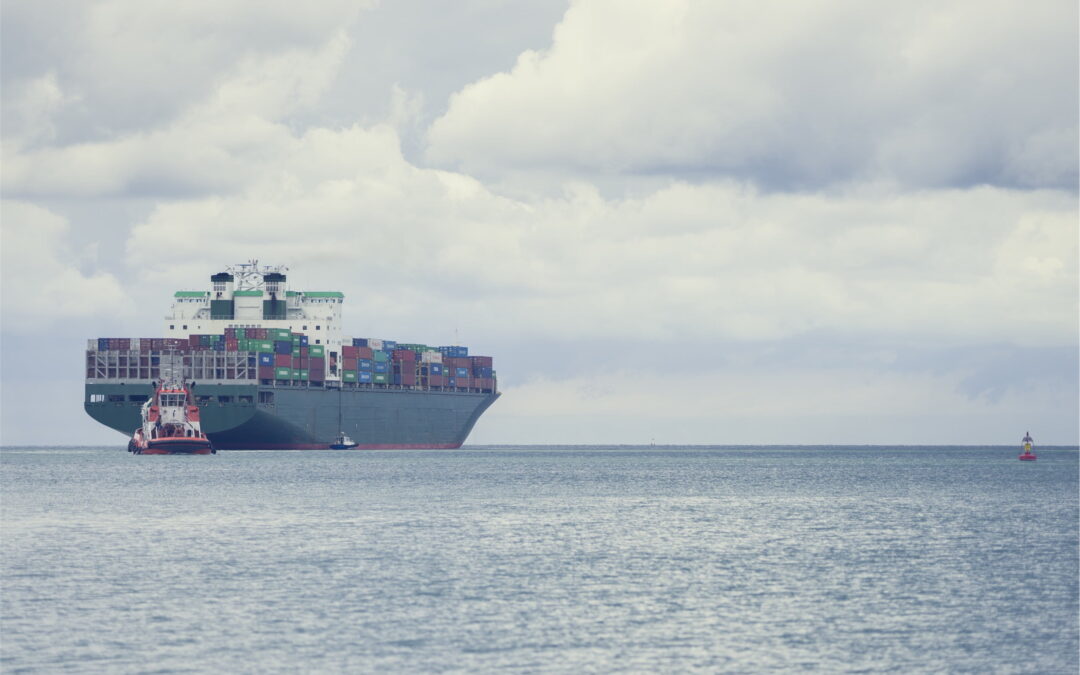Driven by the downturn and decarbonisation targets, a high proportion of new container ship orders are concentrated on larger vessels. However, risk exposures continue to grow too, according to the latest Allianz Safety & Shipping Review 2023.
Over two-thirds (65%) of fleet growth over the next two years will be concentrated in the segment of ships larger than 15,000 TEU, while the fleet of ships smaller than 3000 TEU will reduce, The Baltic and International Maritime Council (BIMCO) estimates.
‘Decarbonisation and the drive for more efficient shipping will reinforce and accelerate the trend for large vessels, which now make up a significant proportion of the world fleet, and account for a disproportionate amount of container trade,’ says Captain Rahul Khanna, Global Head of Marine Risk Consulting at Allianz Global Corporate & Specialty (AGCS).
Khanna adds: ‘Large container vessels are clearly here to stay. Efforts now need to focus squarely on making them more efficient, less polluting, and safer. If the risks are not appropriately managed, some insurers may look to scale back their exposure to large container vessels and other mega ships.’
Also read: ‘Falling freight rates threaten safety and decarbonisation progress in shipping’
440 vessels on order
As new orders are delivered, smaller, older tonnage is being replaced by large container vessels, Justus Heinrich, Global Product Leader Marine Hull at AGCS notes. The ten largest container operators have 440 new vessels on order, and the majority will be larger than the ships they replace.

‘An increase in the number of larger vessels leads to higher container cargo accumulation and exposure,’ says Heinrich. ‘This trend could compound the problems seen in recent years with large vessels, including fires, grounding and port blockages. The salvage cost for large container ships is tremendously high, with only a limited number of ports and shipyards able to service and repair such vessels.’
Increase in claim cost per vessel
According to Cefor (the Nordic Association of Marine Insurers) analysis [2] of hull claims trends, the container ship segment is the only large segment with an increase in the claim cost per vessel between 2020 and 2022 and an increase in the frequency of large losses. The frequency of claims in excess of USD 500,000 remained high, contrary to the bulk and tank segment.
Also read: Allianz: ‘Fire, collision, sinking and damaged cargo top causes of marine insurance losses’
Asia hotspot for total losses
The increase in the number of large vessels may be one of the factors behind high levels of shipping incidents in South East Asia, with the region being something of a hot spot in recent years for marine insurance claims and total losses.
‘We have seen a number of grounding and collision incidents involving large vessels in both the Singapore Strait and the South China Sea. The waters around Singapore can be congested and the shipping lanes narrow. A small mistake by a large vessel can easily result in a grounding or collision,’ says Captain Nitin Chopra, Senior Marine Risk Consultant at AGCS.
Longer delays
Large vessels can also lead to longer delays for cargo owners. Whether it is a fire or a grounding incident, if it involves a large container vessel, it will likely take longer to resolve, leading to increased costs. Large vessels can take longer to re-float when grounded and may have to travel further to reach an appropriate port of refuge or repair yard.
‘The larger the vessel, the higher the risks of having multiple interests involved in an incident. Companies need to consider the risks of container shipping cargo delays and prepare contingency plans should their cargo become involved in an incident,’ says Régis Broudin, Global Head of Marine Claims at AGCS.
Also read: ‘Shipping losses hit record low, but jump in fires’








